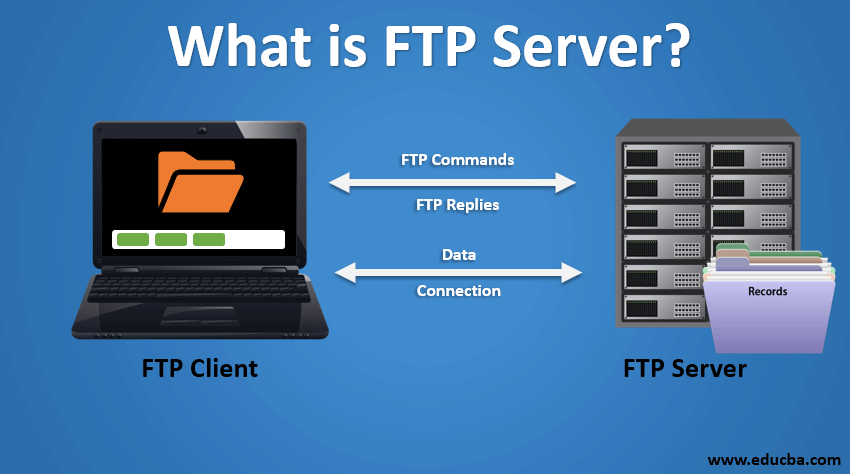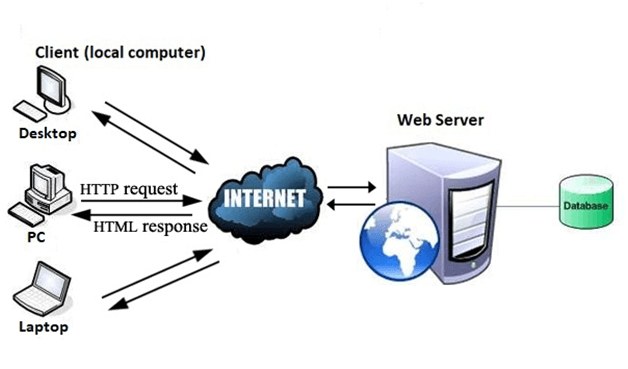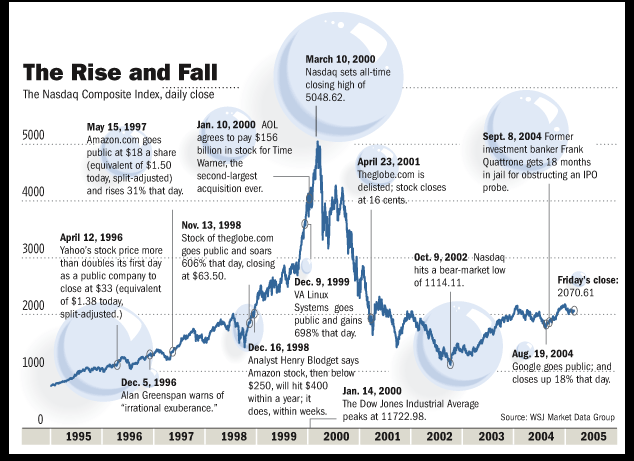The Evolution of the Internet
The Evolution of the Internet
Introduction
The Internet has revolutionized the way we communicate, access information, and conduct business. It has become an indispensable part of our daily lives, connecting billions of people across the globe. The internet's evolution has been a remarkable journey, marked by significant advancements in technology and infrastructure. In this essay, we will explore the evolution of the internet, starting from its humble beginnings to its current state, and speculate on its future prospects.
1. The Birth of the Internet
The birth of the Internet can be traced back to the late 1960s and early 1970s, during the time of the Cold War. The precursor to the Internet was a network called ARPANET (Advanced Research Projects Agency Network), which was funded by the United States Department of Defense's Advanced Research Projects Agency (ARPA).
ARPANET was created to address the need for a decentralized and robust communication network that could withstand a nuclear attack. The idea was to create a network that would allow computers to communicate and share information with one another, even if some of the network nodes were destroyed.
In 1969, the first ARPANET node was established at the University of California, Los Angeles (UCLA), followed by nodes at Stanford Research Institute, University of California, Santa Barbara, and the University of Utah. These nodes were interconnected using a technology called packet switching, which allowed data to be broken down into small packets and sent across the network.
The development of TCP/IP (Transmission Control Protocol/Internet Protocol) in the 1970s was a significant milestone in the birth of the Internet. TCP/IP standardized the protocols used for communication across different networks, allowing them to interconnect and form a larger network of networks. This laid the foundation for the global network we now know as the Internet.
In the following years, more institutions and organizations joined the network, and the Internet expanded rapidly. The introduction of email in the 1970s and the development of the World Wide Web in the late 1980s and early 1990s further accelerated the Internet's growth and made it accessible to a wider audience.
Today, the Internet has become an integral part of our lives, enabling global communication, information sharing, e-commerce, social networking, and much more. It has transformed the way we work, learn, and interact with each other, and continues to evolve and shape the world we live in.
2. The Emergence of Email and File Transfer Protocol (FTP):
The emergence of email and File Transfer Protocol (FTP) played significant roles in the development of digital communication and file sharing. Here's some information about each of these technologies:
1. Email:
Email, short for electronic mail, is a method of exchanging digital messages between individuals or groups over the internet or other computer networks. It was one of the earliest applications of networked communication and has become an integral part of modern communication.
Email emerged in the 1970s, with the first electronic message sent over a network in 1971 by Ray Tomlinson. Initially, email systems were limited to users within the same computer network, but with the advent of the internet, email became a global communication tool.
Email allows users to send and receive messages containing text, attachments (such as documents, images, or videos), and other multimedia content. It relies on various protocols, such as Simple Mail Transfer Protocol (SMTP) for sending messages and Post Office Protocol (POP) or Internet Message Access Protocol (IMAP) for retrieving messages.
Today, email has become an essential means of communication for both personal and professional purposes. It enables efficient and asynchronous communication, facilitates information sharing, and serves as a central component of many online services.
2. File Transfer Protocol (FTP)
File Transfer Protocol (FTP) is a standard network protocol used for transferring files between computers over a TCP/IP-based network, such as the internet. It allows users to upload and download files from remote servers.
FTP was developed in the early 1970s and became widely used in the 1980s as a reliable method for sharing files between computers. It provides a client-server architecture, where one computer acts as the FTP server hosting the files, and another computer (the client) connects to the server to perform file transfers.
FTP operates through a set of commands and responses exchanged between the client and server. Users can authenticate themselves with a username and password to access specific directories on the server and perform file operations, such as uploading, downloading, renaming, and deleting files.
While FTP has been widely used in the past, its usage has declined in recent years due to security concerns and the emergence of more secure file transfer protocols, such as Secure File Transfer Protocol (SFTP) and File Transfer Protocol Secure (FTPS), which add encryption to FTP transmissions.
In summary, email revolutionized digital communication by allowing the exchange of messages and files over computer networks. FTP, on the other hand, provided a standardized method for transferring files between computers, enabling efficient sharing and collaboration. Both of these technologies have had a significant impact on how we communicate and share information in the digital age.
3. The Birth of the World Wide Web
The birth of the World Wide Web (WWW) was a pivotal moment in the history of the internet and had a profound impact on the way information is accessed and shared. Here's some information about the birth and development of the World Wide Web:
The World Wide Web was invented by Sir Tim Berners-Lee, a British computer scientist, in the late 1980s. While working at CERN (the European Organization for Nuclear Research) in Switzerland, Berners-Lee developed a system for organizing and linking information using hypertext.
In 1989, Berners-Lee submitted a proposal titled "Information Management: A Proposal" to his superiors at CERN, outlining the concept of a distributed information system. This proposal laid the foundation for what would later become the World Wide Web.
Key components of the World Wide Web include
1. Hypertext Markup Language (HTML): HTML is a markup language used to create the structure and format of web pages. It allows the inclusion of hyperlinks, which enable users to navigate between different web pages by simply clicking on links.
2. Hypertext Transfer Protocol (HTTP): HTTP is the protocol used for transferring data between web servers and web browsers. It allows web browsers to send requests for web pages to servers and receive the requested pages in response.
3. Uniform Resource Locator (URL): A URL is a web address that identifies the location of a resource on the internet. It consists of a protocol identifier (e.g., http://), a domain name (e.g., www.example.com), and the specific path to the resource.
In 1990, the first web browser, called WorldWideWeb, was created by Berners-Lee. It allowed users to view and navigate web pages that were written in HTML and hosted on web servers. The following year, in 1991, the first web server software, CERN httpd, was released to the public.
The World Wide Web gained significant traction in the early 1990s as more people and organizations recognized its potential. The development of graphical web browsers like Mosaic and later Netscape Navigator made it more user-friendly and accessible to a wider audience.
The introduction of the Mosaic browser in 1993 led to a surge in public interest in the World Wide Web. It brought multimedia capabilities to web browsing, allowing the integration of images and other media types into web pages.
As the World Wide Web continued to evolve, new technologies and standards were introduced, such as Cascading Style Sheets (CSS) for web page styling, JavaScript for client-side interactivity, and various web development frameworks and content management systems.
Today, the World Wide Web has become an integral part of everyday life for billions of people worldwide. It serves as a platform for communication, information sharing, e-commerce, social networking, and much more. The birth of the World Wide Web revolutionized how we access, interact with, and contribute to the vast wealth of information available on the internet.
4. The Rise of Commercialization and the Dot-Com Boom
The rise of commercialization and the Dot-Com Boom refers to a period in the late 1990s when there was a rapid growth of internet-based businesses and a surge in investor interest in the emerging digital economy. Here's some information about this significant era:
1. Commercialization of the Internet
In the early days of the internet, its usage was primarily limited to academic, government, and research institutions. However, as the World Wide Web and internet technologies advanced, businesses began to recognize the commercial potential of the internet for reaching global audiences and conducting online transactions.
The commercialization of the internet involved the development of e-commerce platforms, online services, and digital products. Companies started establishing an online presence, setting up websites to promote their products and services, and offering online shopping capabilities.
The availability of secure online payment systems, advancements in web technologies, and increasing internet penetration among the general population contributed to the growth of online business activities.
2. The Dot-Com Boom
The Dot-Com Boom refers to the period from the mid-1990s to the early 2000s when there was a speculative frenzy and substantial investment in internet-based startups. This period witnessed a surge in the valuation of internet companies, many of which had "dot-com" in their names, hence the term "Dot-Com Boom."
Investors were attracted to the potential of internet businesses to disrupt traditional industries and capture global markets. Startups focused on various sectors, including e-commerce, online marketplaces, digital media, and technology platforms.
During this time, venture capital funding flowed into internet startups, and initial public offerings (IPOs) became a popular means for companies to raise capital and go public. The stock prices of many internet companies experienced significant increases, often fueled by speculation rather than fundamental financial metrics.
The Dot-Com Boom witnessed the emergence of iconic companies such as Amazon, eBay, Yahoo, and Google. These companies, along with numerous others, aimed to leverage the power of the internet to transform industries and create new business models.
3. Dot-Com Bubble Burst
The euphoria of the Dot-Com Boom eventually led to a market correction and the bursting of the dot-com bubble. The excessive speculation, overvaluation of internet companies, and unsustainable business models led to a decline in investor confidence.
Starting in the late 1990s, many dot-com companies faced financial difficulties and struggled to generate profits. Investors started questioning the viability and sustainability of these businesses. The stock market experienced a significant downturn, leading to a sharp decline in the market value of internet companies.
By the early 2000s, many dot-com companies went bankrupt or faced substantial losses. This period marked a reality check for the internet industry, forcing a reevaluation of business models and a focus on profitability and sustainability.
However, despite the bursting of the dot-com bubble, the internet's influence continued to grow, and valuable lessons were learned from the boom and subsequent bust. The dot-com era laid the groundwork for future digital innovations, and many successful internet companies emerged from the ashes of the bubble, shaping the modern digital landscape.
In conclusion, the rise of commercialization and the Dot-Com Boom was a transformative period that saw the internet's rapid growth and the emergence of internet-based businesses. While it ended with the bursting of the dot-com bubble, the era laid the foundation for the digital economy and paved the way for the continued expansion and evolution of the internet in the years to come.
5. The Age of Social Media and Web 2.0
The Age of Social Media and Web 2.0 refers to a period characterized by the emergence and widespread adoption of social media platforms and the evolution of the internet into a more interactive and participatory space. Here's some information about this significant era:
1. Web 2.0:
Web 2.0 represents a shift in the way the internet is used and experienced. It emphasizes user-generated content, collaboration, and the ability for users to interact and contribute to online platforms. Web 2.0 introduced a range of technologies, concepts, and social behaviors that transformed the internet into a dynamic and interactive space.
Key features of Web 2.0 include:
- User-generated content: Web 2.0 platforms allow users to create and share content, such as blog posts, videos, photos, and comments, empowering individuals to contribute and participate actively in the online environment.
- Social networking: Web 2.0 facilitated the rise of social networking platforms that connect people with shared interests, enabling users to create profiles, connect with others, and share updates, photos, and other content.
- Collaboration and crowd-sourcing: Web 2.0 introduced tools and platforms that enable collaborative efforts and collective intelligence, allowing users to work together on projects, share knowledge, and collectively solve problems.
- Rich internet applications: Web 2.0 brought about the development of more interactive and dynamic web applications that provided enhanced user experiences, incorporating features like drag-and-drop interfaces, real-time updates, and multimedia integration.
2. Social Media
Social media platforms emerged as a prominent aspect of the Web 2.0 era. Social media refers to online platforms that facilitate social interaction, content sharing, and networking among users. It enables individuals and organizations to connect, communicate, and share information on a global scale.
Some key social media platforms that gained widespread popularity during this period include:
- Facebook: Launched in 2004, Facebook quickly became the world's largest social networking platform, enabling users to create profiles, connect with friends, share updates, photos, and videos, and engage in various online activities.
- Twitter: Introduced in 2006, Twitter revolutionized microblogging by allowing users to share short messages or "tweets" in real-time, fostering public conversations, news sharing, and networking.
- YouTube: Founded in 2005, YouTube became the dominant platform for video sharing, enabling users to upload, view, and share videos on a massive scale.
- Instagram: Launched in 2010, Instagram focused on photo and video sharing, providing users with a visually driven platform for sharing moments, stories, and artistic content.
The rise of social media platforms transformed communication, information dissemination, and online interactions. It empowered individuals, amplified voices, and provided a platform for social and political movements.
Social media also brought challenges related to privacy, online harassment, and the spread of misinformation, prompting discussions on digital ethics, regulation, and the responsible use of these platforms.
In summary, the Age of Social Media and Web 2.0 marked a significant shift in the internet landscape. Web 2.0 technologies and concepts facilitated greater user participation, collaboration, and the emergence of social media platforms, fundamentally changing how people connect, share information, and interact online. The impact of social media continues to shape society, communication, and digital culture in profound ways.
6. The Internet of Things (IoT) and Connectivity
The Internet of Things (IoT) refers to the network of physical devices, vehicles, appliances, and other objects embedded with sensors, software, and connectivity capabilities that enable them to collect and exchange data over the internet. These devices are often referred to as "smart" devices because they can interact with their environment and perform tasks autonomously or with minimal human intervention.
Connectivity is a crucial aspect of the IoT. It allows these devices to communicate and share data with each other, as well as with centralized systems or cloud platforms. Various communication technologies can be used for IoT connectivity, including Wi-Fi, Bluetooth, cellular networks (2G, 3G, 4G, and 5G), Zigbee, Z-Wave, and more.
The IoT has the potential to revolutionize many aspects of our lives. By connecting everyday objects to the internet, we can create a more efficient and interconnected world. Here are some key areas where the IoT is making an impact:
1. Smart Homes: IoT-enabled devices such as smart thermostats, lighting systems, security cameras, and appliances allow homeowners to control and automate various aspects of their homes remotely. They can adjust the temperature, turn on/off lights, monitor security, and manage energy consumption.
2. Industrial IoT (IIoT): The industrial sector leverages IoT technologies to improve efficiency, productivity, and safety. Industrial IoT applications include asset tracking, predictive maintenance, remote monitoring of equipment, and optimizing supply chains.
3. Healthcare: IoT devices are being used in healthcare to monitor patients remotely, track vital signs, and enable telemedicine. Wearable devices, smart implants, and health monitoring systems help healthcare professionals deliver better care and provide early intervention.
4. Smart Cities: IoT infrastructure can be deployed in urban areas to monitor and manage various aspects of city life, including traffic flow, parking, waste management, public transportation, and energy consumption. This can lead to improved sustainability, reduced costs, and enhanced quality of life for citizens.
5. Agriculture: IoT sensors and actuators enable precision agriculture, where farmers can monitor soil moisture, temperature, and nutrient levels in real-time. This data helps optimize irrigation, fertilization, and pest control, leading to improved crop yield and resource utilization.
6. Wearables and Personal Devices: Fitness trackers, smartwatches, and other wearable devices collect data about users' physical activity, heart rate, sleep patterns, and more. This information can be used to track personal health goals, provide feedback, and assist in making informed lifestyle choices.
However, the rapid growth of the IoT also poses challenges. Security and privacy concerns arise due to the large number of connected devices and the potential for unauthorized access or data breaches. Additionally, the sheer volume of data generated by IoT devices requires robust data management and analysis capabilities to derive meaningful insights.
As technology advances and connectivity improves, the IoT is expected to continue expanding its reach, transforming industries, and shaping the way we interact with the world around us.
7. Cloud Computing and Big Data
Cloud computing and big data are two interconnected concepts that have revolutionized the way businesses and individuals manage and analyze large volumes of data. Let's take a closer look at each of them:
Cloud Computing:
Cloud computing refers to the delivery of computing services over the internet. Instead of hosting software and storing data on local computers or servers, cloud computing allows users to access these resources remotely through the internet. The cloud infrastructure is managed by service providers, who offer a range of services such as storage, servers, databases, networking, and software applications.
Benefits of Cloud Computing:
1. Scalability: Cloud computing provides the ability to quickly scale resources up or down based on demand. This flexibility allows businesses to efficiently manage their computing needs and avoid overprovisioning or underprovisioning.
2. Cost savings: Cloud computing eliminates the need for upfront hardware and infrastructure investments. Businesses can pay for the resources they use on a pay-as-you-go basis, reducing capital expenses.
3. Accessibility and collaboration: Cloud-based services can be accessed from anywhere with an internet connection, enabling remote work and fostering collaboration among teams spread across different locations.
4. Reliability and redundancy: Cloud providers typically offer high availability and redundancy, ensuring that data and applications are accessible even in the event of hardware failures or natural disasters.
5. Automatic updates and maintenance: Service providers handle the maintenance and updates of the underlying infrastructure and software, relieving users of the burden of managing these tasks themselves.
Big Data:
Big data refers to extremely large and complex datasets that cannot be easily managed, processed, or analyzed using traditional data processing applications. These datasets often include structured, semi-structured, and unstructured data from various sources, such as social media, sensors, logs, and transaction records.
Characteristics of Big Data:
1. Volume: Big data is characterized by its sheer volume. It typically involves terabytes, petabytes, or even exabytes of data.
2. Velocity: Big data is generated at high speed and requires real-time or near-real-time processing to derive meaningful insights. Examples include streaming data from social media or Internet of Things (IoT) devices.
3. Variety: Big data encompasses diverse data types, including structured (e.g., relational databases), semi-structured (e.g., XML, JSON), and unstructured (e.g., text, images, videos) data.
4. Veracity: Big data can be noisy, inconsistent, or of unknown quality. Ensuring data quality and reliability is a challenge in big data analytics.
5. Value: The ultimate goal of big data analytics is to extract valuable insights and make data-driven decisions that can lead to improved business processes, cost savings, and competitive advantages.
Cloud Computing and Big Data
Cloud computing provides an ideal platform for storing, processing, and analyzing big data. The cloud's scalability, on-demand resource allocation, and pay-as-you-go pricing model make it well-suited for handling the massive storage and processing requirements of big data analytics. Cloud-based services, such as Amazon Web Services (AWS), Microsoft Azure, and Google Cloud Platform (GCP), offer a wide range of tools and services specifically designed for big data processing, such as distributed storage systems (e.g., Hadoop Distributed File System), data processing frameworks (e.g., Apache Spark), and managed analytics services.
By leveraging cloud computing, organizations can efficiently store and process big data without the need for large upfront investments in infrastructure and hardware. They can scale resources dynamically based on workload requirements and focus on extracting valuable insights from the data rather than managing the underlying infrastructure. Additionally, cloud-based analytics tools and services enable organizations to perform complex data processing tasks, such as machine learning, predictive analytics, and real-time analytics, to gain actionable insights from their big data.
Overall, the combination of cloud computing and big data has
transformed the way businesses approach data management and analysis, enabling them to unlock the potential of large datasets and derive meaningful insights to drive innovation, improve decision-making, and gain a competitive edge in today's data-driven world.
9. Security and Privacy Concerns
As the internet has evolved, so have the challenges associated with security and privacy. Cyberattacks, data breaches, and privacy violations have become significant concerns. Governments and organizations have implemented various measures to safeguard information and combat cyber threats. The development of encryption technologies, secure communication protocols, and stricter regulations has aimed to protect users and their data in an increasingly interconnected world.
10. The Future of the Internet
The future of the internet holds immense potential for further innovation, connectivity, and transformation across various domains. While it is challenging to predict specific technological advancements, several trends are shaping the future of the internet:
1. Increased Connectivity: The expansion of internet connectivity is set to continue, with efforts to bridge the digital divide and bring internet access to underserved areas. Initiatives such as satellite-based internet services and low Earth orbit (LEO) satellite constellations aim to provide global connectivity, enabling more people to access the internet.
2. Internet of Things (IoT): The IoT refers to the network of interconnected devices embedded with sensors, software, and network connectivity, allowing them to collect and exchange data. The future will witness an exponential growth of IoT devices, enabling a wide range of applications across industries, such as smart homes, autonomous vehicles, industrial automation, healthcare monitoring, and environmental monitoring.
3. 5G and Beyond: The deployment of 5G networks will provide faster and more reliable wireless connectivity, enabling higher data transfer rates, lower latency, and supporting massive IoT deployments. Beyond 5G, technologies such as 6G are being researched and developed to further enhance network capabilities, enabling new use cases like holographic communications, immersive virtual reality, and highly reliable and low-latency communication networks.
4. Edge Computing: Edge computing involves processing and analyzing data closer to its source, at the edge of the network, rather than relying solely on centralized cloud infrastructure. With the proliferation of IoT devices and applications requiring real-time processing, edge computing will become increasingly important to reduce latency, improve efficiency, and enable faster decision-making.
5. Artificial Intelligence (AI): AI technologies, including machine learning and natural language processing, will continue to advance and have a profound impact on the internet. AI algorithms will enhance personalization, recommendation systems, content generation, cybersecurity, and automation across various industries.
6. Blockchain and Distributed Ledger Technology: Blockchain, a decentralized and immutable ledger, has gained prominence with the rise of cryptocurrencies. Beyond cryptocurrencies, blockchain technology has the potential to transform various sectors, including supply chain management, financial services, healthcare, and digital identity verification, by providing transparency, security, and traceability.
7. Privacy and Security: As the internet becomes more pervasive, addressing privacy and security concerns will be critical. Striking a balance between innovation and safeguarding user data and privacy will be an ongoing challenge. Efforts in developing secure protocols, encryption methods, and privacy-enhancing technologies will shape the future internet landscape.
8. Augmented and Virtual Reality: Augmented reality (AR) and virtual reality (VR) technologies will evolve, providing immersive experiences and transforming industries such as gaming, entertainment, education, and remote collaboration. The internet will play a vital role in delivering content and facilitating interactions in these virtual environments.
9. Quantum Computing: Quantum computing has the potential to revolutionize computing power by leveraging quantum phenomena to perform complex calculations exponentially faster than classical computers. In the future, quantum computing may enable breakthroughs in areas such as cryptography, optimization, drug discovery, and climate modeling.
10. Ethical and Regulatory Considerations: As the internet evolves, there will be increased focus on ethical considerations, including data privacy, algorithmic transparency, and responsible AI usage. Regulatory frameworks may evolve to address emerging challenges, ensuring a balance between innovation, user protection, and societal well-being.
It's important to note that the future of the internet is shaped by ongoing research, technological advancements, and the evolving needs and demands of individuals and society. While these trends provide insights into the direction of the internet's evolution, there will likely be unexpected innovations and paradigm shifts that shape its future landscape.
Conclusion
The internet has come a long way since its inception, transforming the world in unimaginable ways. From a modest research project to a global network connecting billions of people, the internet's evolution has been driven by innovation, collaboration, and the constant pursuit of connectivity and convenience. As we look ahead, the internet's future promises even more exciting advancements, shaping the way we live, work, and interact in the years to come.






:max_bytes(150000):strip_icc()/terms_f_ftp-file-transfer-protocol_FINAL-d9b2ee7e0fe34859b6be843034e500eb.jpg)












Comments